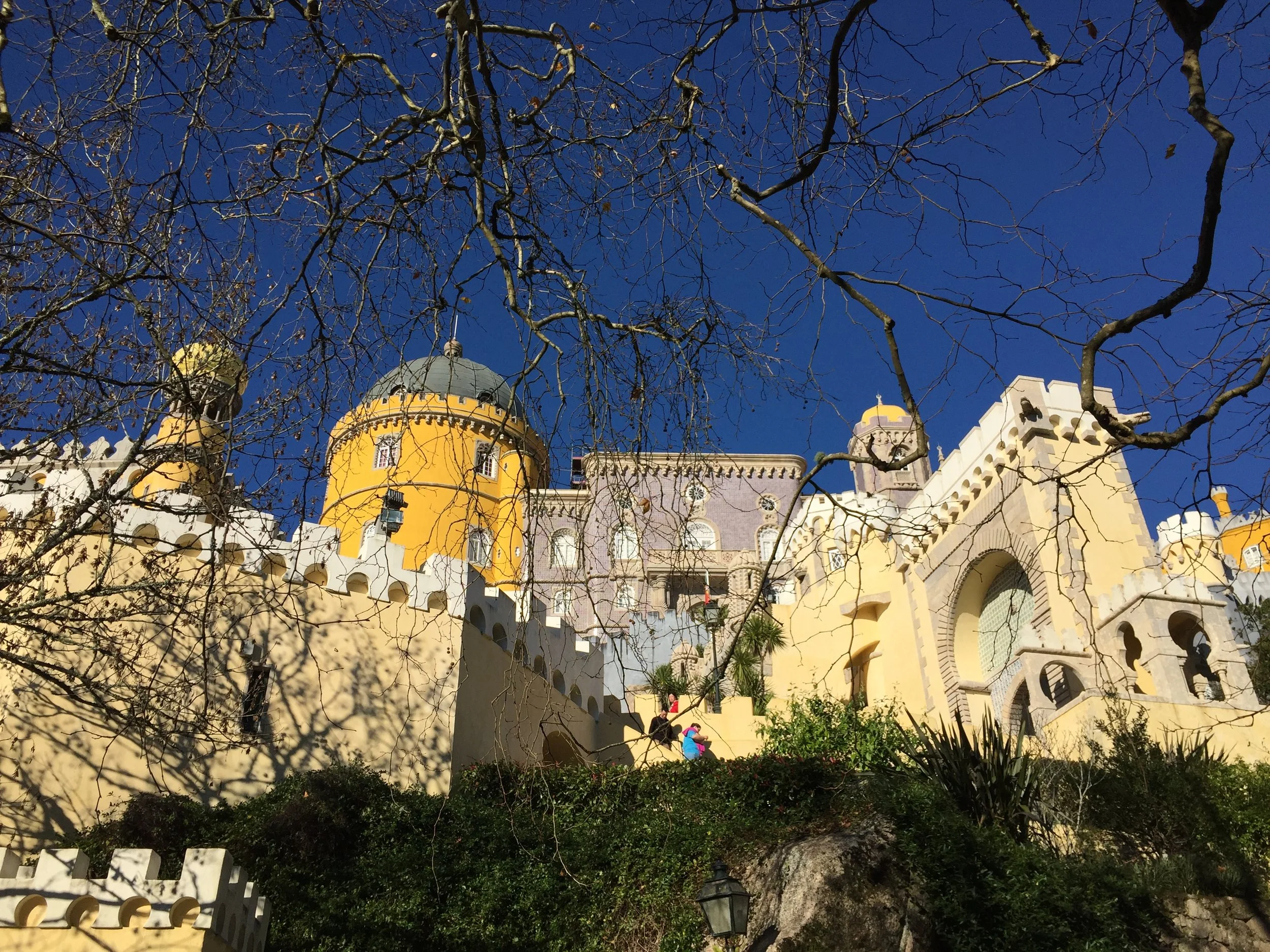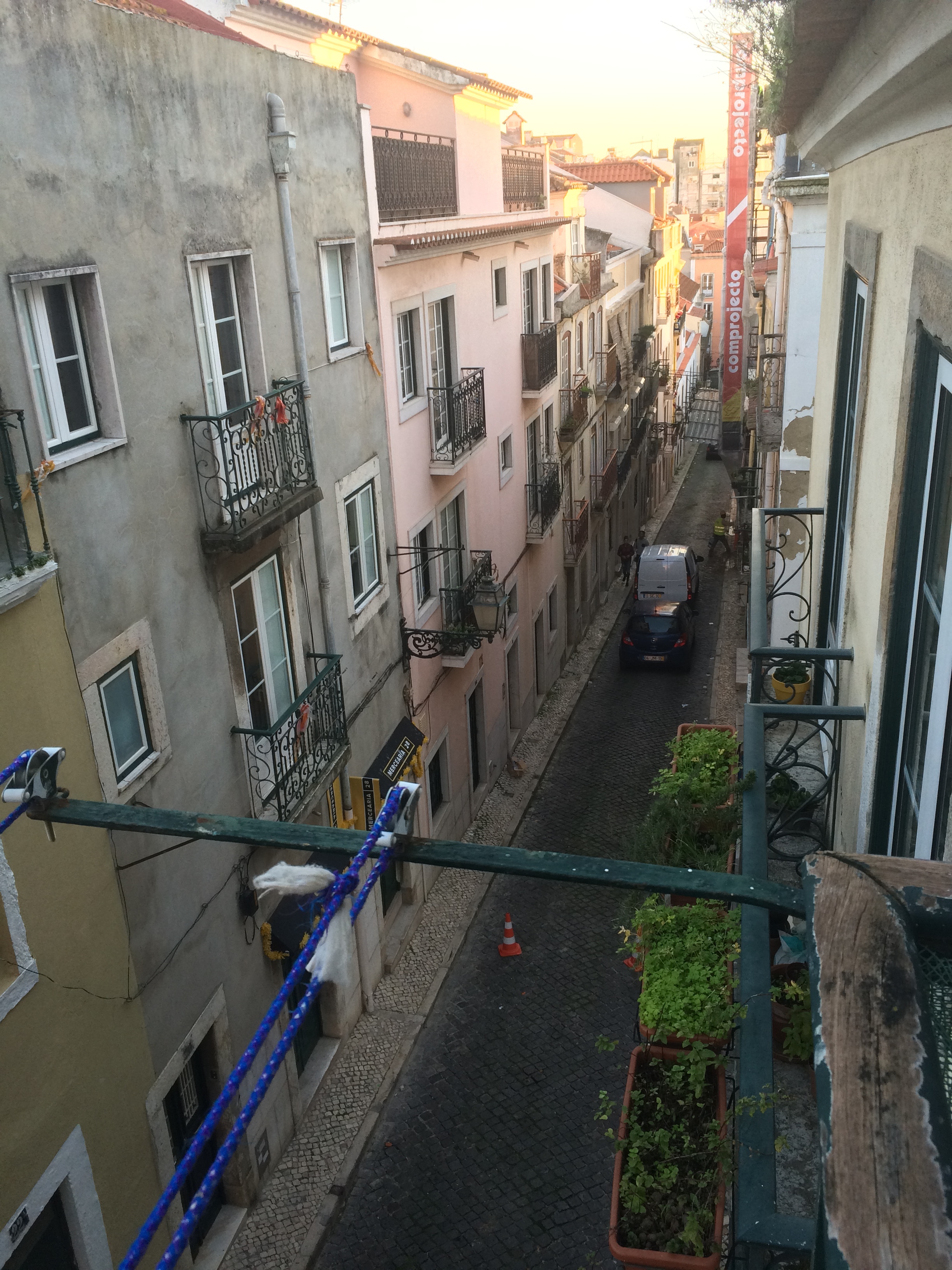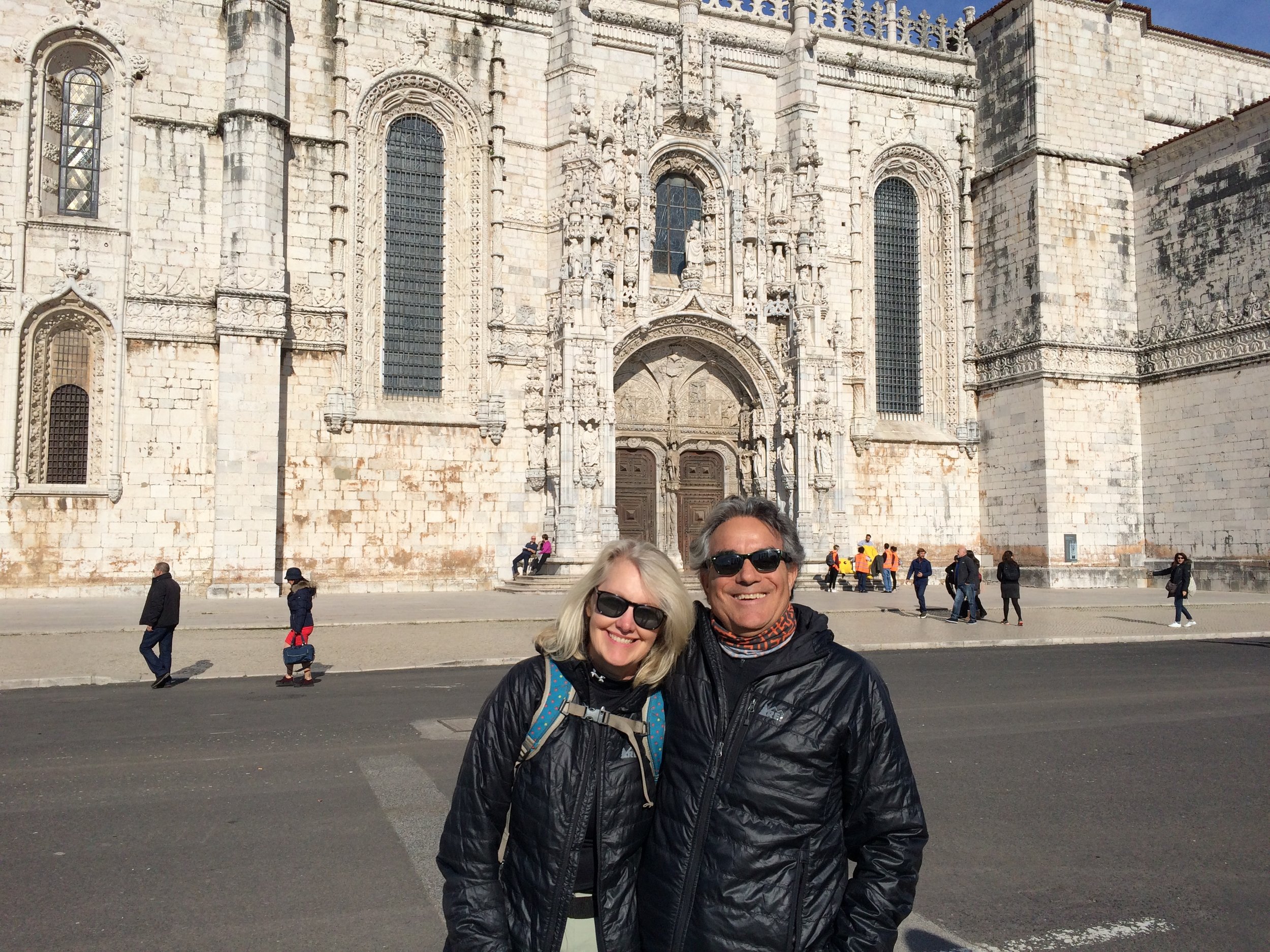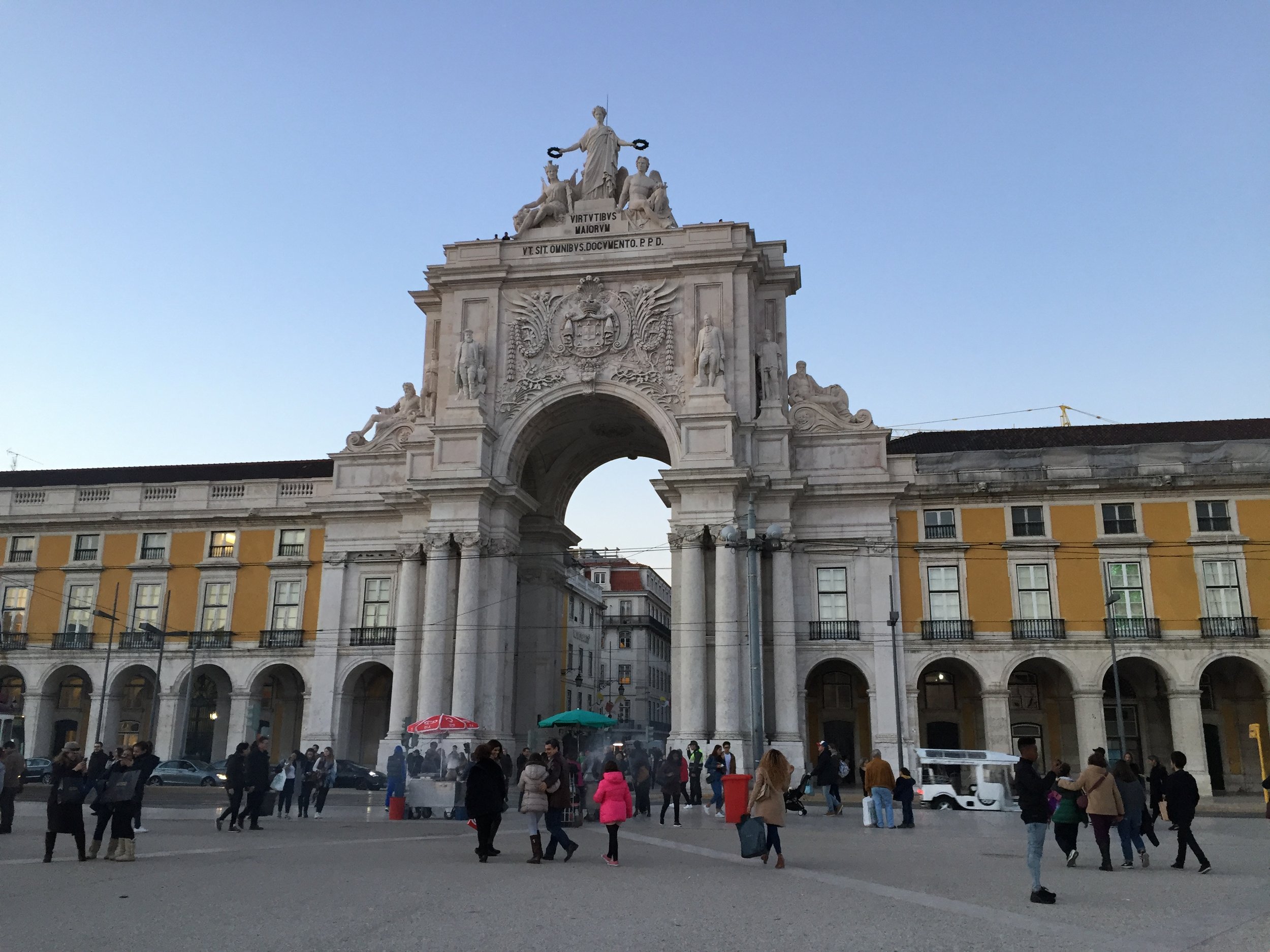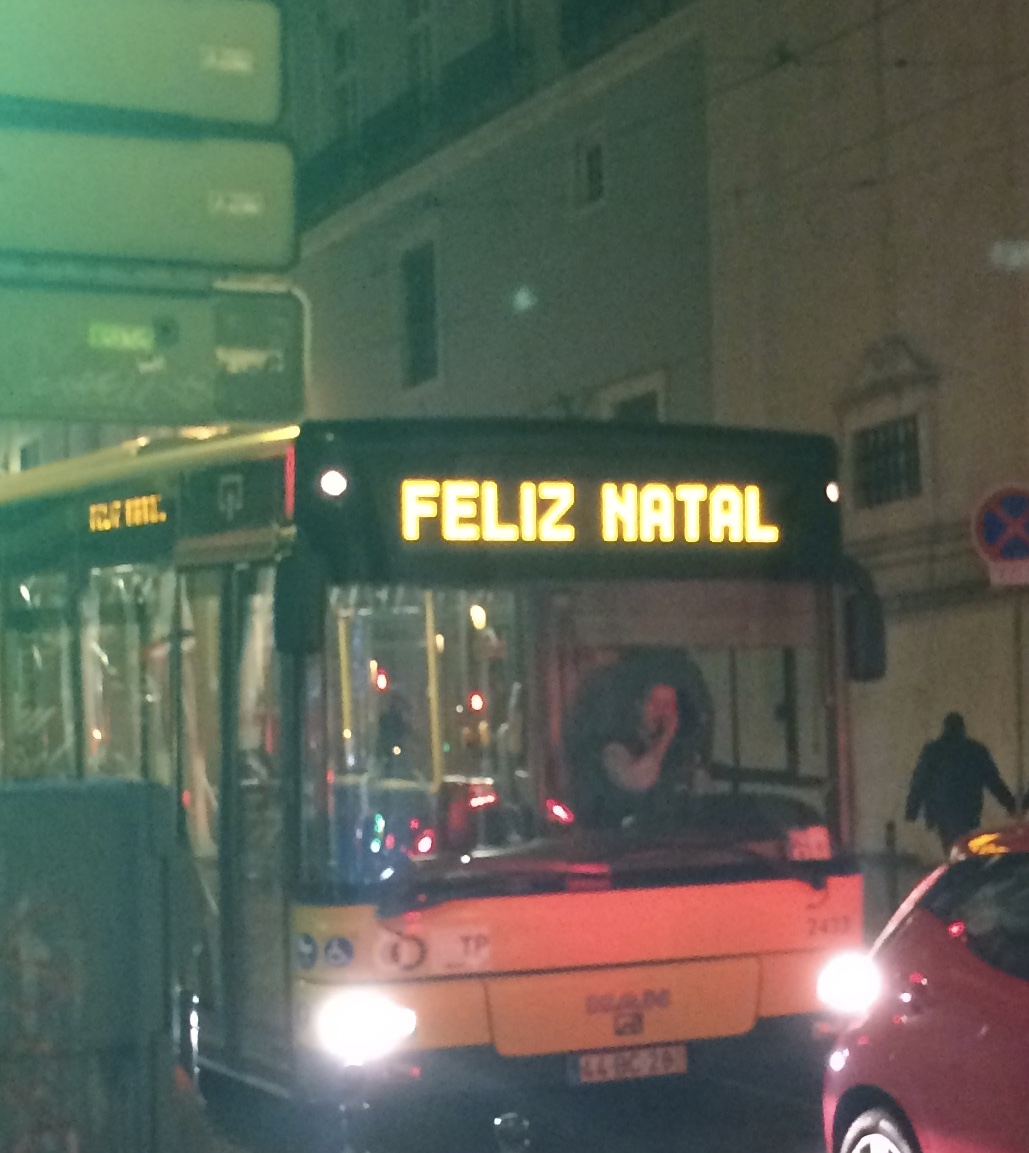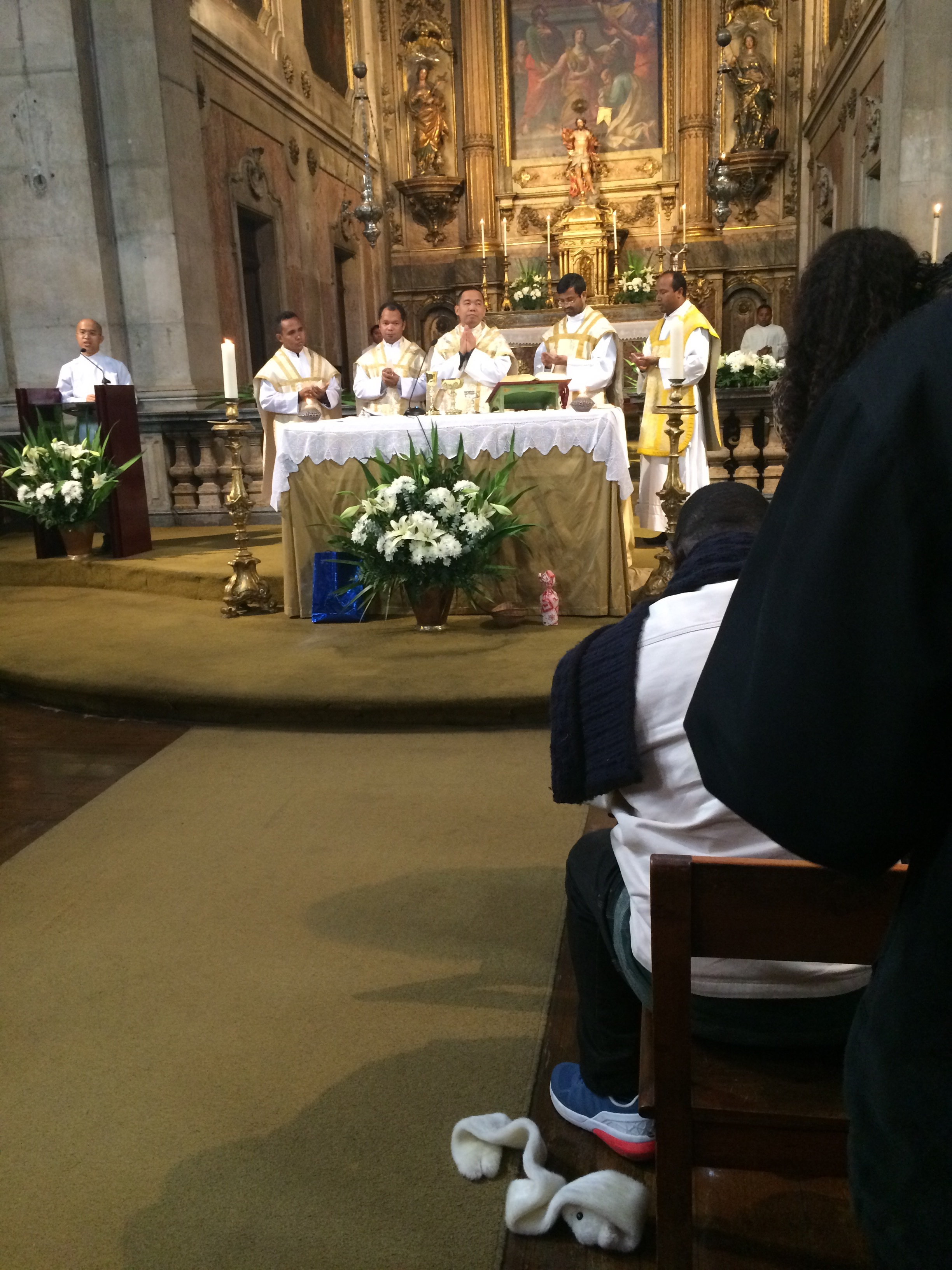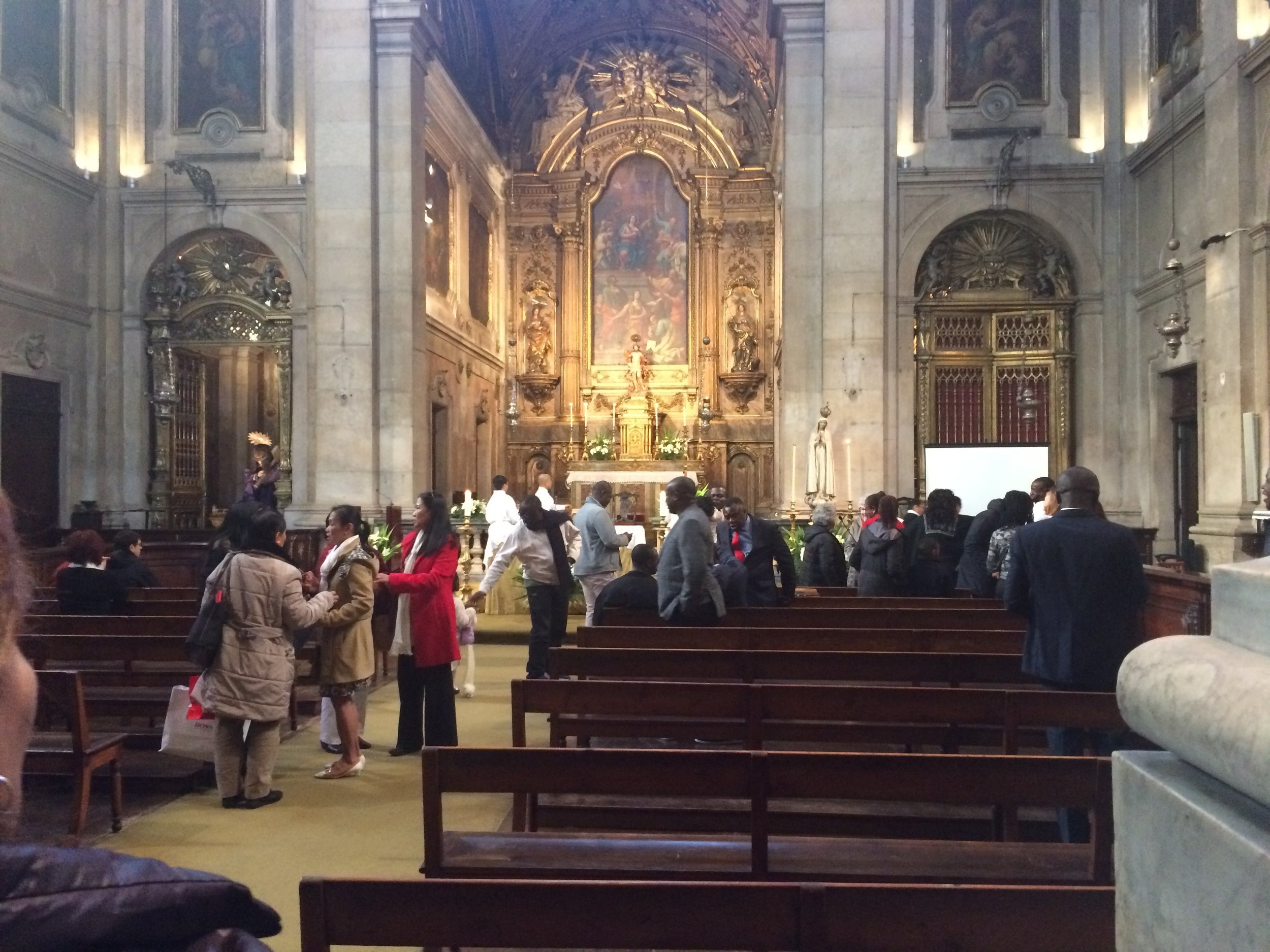We landed at the Lisbon airport after a 2 hour flight from France. At the Charles DeGaulle airport in Paris we went through 2 separate check points and had to drink, not discard, the water we carried in front of the TSA agents. In Lisbon, we picked up our luggage and walked out of the terminal without any passport check, nor stamp, nor border crossing nonsense. Is that good or bad?!
The taxi took us quickly to our Airbnb in the historic part of the city. Lisbon has a population of 600,000 spread out around the valleys. We were impressed with the cleanliness and sparkle of the city. Traffic was manageable as we drove the narrow cobblestone streets to our historic flat. We are on the third floor with windows shuttered by split doors that opened onto our balcony overlooking the mosaic sidewalks and street. The main street at the bottom of the hill is where the city trolley runs, taking us everywhere, and to the left of our street is a large church. Down the narrow streets and alleys there are small shops selling everything from used books to butchers and bakeries. This is a grand city with a long waterfront surrounded by 7 rolling hills which require rolling sidewalks, and up and down those narrow mosaic sidewalks we walked many times.
Our first adventure was meeting up with a Walking Tour, which started in the historic suburb of Lisbon, called Belem, that is on the water. We navigated the metro train to Belem and landed in front of the President’s residence which is also known as the “Pink Palace”.
Our first of many famous coffee and "pasteis"
On the same street is the giant 1496 cathedral and monastery known as “Monastery of St. Jeronimos” that has a grand history. In the past the Portugal government nationalized and then confiscated all the Catholic property. The Jesuit monks were deprived of support and in order to maintain themselves started to sell their special “Custard Cupcakes” to the people from a bakery building near the monastery land in 1837. We visited the original bakery site to enjoy these scrumptious snacks called “ Pasteis de belem” that are a mainstay and copied throughout Portugal.
Across the street by the river edge is the “Torre de Belem” which is a mini castle with drawbridge and cannon to protect the river mouth of the Lisbon estuary from the Atlantic ocean into the Tejo River. We enjoyed walking up the winding staircase to cannon level, the king’s audience chamber and the observation tower and balcony.
We walked to the river front which displayed many large statutes, old and modern, that memorialized the Golden Age of Portugal.
The Golden Age brought the discovery of Brazil, the discovery of a water route to India that interrupted Venice’s grip on world commerce to the east, the trade routes to China and the habitation of Macau in China, and colonization in Africa. At the end of the day we jumped into a WWII museum and Frank had a good time looking at the model airplanes and old war relics.
We spent the next day touring the “Castillo de Sao Jorge”, a castle that was built by the Moors who controlled Portugal and Spain for centuries. Eventually, Christian Crusaders joined forces with the army of Afonso I, the general who lead the northern forces to battle against the Moors in the south. His victory allowed three things to develope, it drove the moors out of Lisbon and then Portugal, actually caused the Pope and Spanish King to recognize Portugal as a sovereign country, not a mere province of Spain, and elevated the general to the first Sovereign of Portugal. Later in history the grounds of the Castle of St. George housed the Palace of the some of the Kings of Portugal. The Palace structure was ruined by extreme multiple earthquakes that hit Lisbon and all that is left on site is the Moor Castle fortification. It was a tremendous fortress, virtually impenetrable, except that the storage of food and supplies was not sufficient to overcome the long siege by Afonso I and his army.
We continued to walk the historic section of Lisbon and viewed the Pantheon, which is the resting place of many Royals. The architecture was more interesting than the inhabitants. We then explored the commercial streets and waterfront in the historic area and happened to pass an open church near the Central Square, the beauty was completely unexpected. Be advised that if the door is open at an ancient church, we walk in. Soon, darkness arrived and we where treated to Christmas lights and decorations all over the downtown streets as we walked home. Lisbon looked grand.
“FELIZ NATAL” as they say in Portugal for our friends that did not get direct email. They even display this holy greeting on the public buses. We wish all friends, families, and loved ones the best holiday season and may the New Year bring prosperity and joy. Though apart, we believe we are lucky to be in Lisbon this week. The Portuguese go all out to demonstrate their love of the Christmas Holidays. There is special bread, called Bolo Rei, similar to fruit cake, but with less fruit. There are roasting chestnuts and moll wine offered on each corner. Street musicians play and music is broadcast. Surprisingly, most Xmas carols we have heard broadcast are the old US favorites sung by Bobby Vinton or Nat King Cole. There are colorful lights on every street and giant Xmas trees in every square. Many buildings are lighted. When we walk to the city center of traditional Lisbon our spirits soar with glee as we join the revelers on the pedestrian packed streets.
Our special treats.
We stopped for another traditional snack of Portugal, which is crazy about cod fish. We noticed this in Brazil too. These are breaded deep fried balls made of a mixture of salted cod fish, cheeses, and spices served hot with sparkling white wine. It is really tangy and good on a cold December night. We also picked up some roasted chestnuts, much better with a lot of salt.
Frank with the cod fish balls and wine
On the day before Christmas, we take a short train trip to the city of Sintra. We arrive at the cute little station and determine that all the theme parks in the world, yes Orlando, must have checked this place out. It is a fantasyland of beautiful palaces, elegant estates, immaculate gardens, boutiques and cute shops, cobblestone streets, and even another Moorish fortress, all accessible by continuous on and off transports. We enjoyed this beautiful town, and when the train arrived back in Lisbon, we again walked the now familiar crowded streets of glitter, music, and market stalls back to our own neighborhood, “Barrio Alto”. See the pictures of fantasyland below
Christmas
After a cozy Christmas eve with Janet and I in our one bedroom Airbnb, where Janet prepared the Lamb roast we purchased at the local butcher and we exchanged our most practical gifts; i.e. 2 warm sweaters each for European travels. We woke with the goal to walk to an advertised English speaking church service. It took us awhile the previous day to track down this particular church as the names are not displayed and this church was identified in Portuguese language as the “church on the street Mandelina”.
In any event we arrived early at the church for the noon service.. The church was ornate, but worn. The alter was covered with sufficient gold leaf paint and had sculptures of St. George slaying the dragon opposite the sculpture of the Virgin Mary. The walls all sported giant paintings of saints and other religious events. We sat on the right side of the main aisle near the keyboard player, who also operated the projector that displayed the musical lyrics. The choir was small and stood up front. As Mass began, the Deacon came forward to welcome the newly formed congregation of English speakers and then 5 Priests came to the alter. The key priest and assistant were from the Philippines, the others were introduced from Malaysia, and two from India. The volunteer choir was made up of 4 singers and 2 musicians. They were from Portugal’s former African colonies, like Angola, and they sang traditional English songs of mass and Christmas songs with a tribal beat. You could tell by their smiles as they came upon the alter that the Priests were pleased with the turn out. The church was packed with many standing in the back, including Europeans, Brits, Americans, Africans, and Philippines. The service was familiar and traditional with 3 gospel readings, but the final prayers were nicely divided and coordinated between all the Priests. The diversity and unity of this newly formed congregation was very inspiring, seeing peoples of different races and nationalities brought together by faith and common language on this holy day. It was a marvelous feeling when greeting and blessing your neighbors. The good vibes lasted the rest of the day.
We walked home, stopping at an open pastry shop for those scrumptious custard cupcakes and some coffee latte. As expected, the streets were not crowded but we did cross paths and walk for awhile with a couple from New Jersey sharing tourist tips. Janet prepared a wonderful downsized turkey dinner, and we had an opportunity to speak with family and some friends by “whatsapp”. It was a wonderful day.
Later in the week Frank got sick, so we delayed our departure from Lisbon one day. The local pharmacist selected several medicines to quicken recovery. Actually the delay worked out and has allowed Janet to rethink theitinerary through northern Portugal and northern Spain with a flight planned to Morocco, more land stops but no ferry boat rides. Next stop Fatima.
